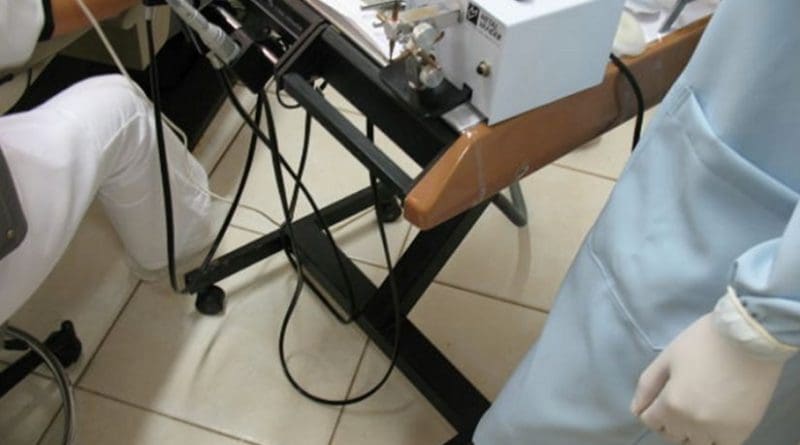Frequent Recreational Cannabis Use Increases Risk Of Gum Disease
Columbia University dental researchers have found that frequent recreational use of cannabis–including marijuana, hashish, and hash oil–increases the risk of gum disease.
The study was published in the March issue of the Journal of Periodontology.
Periodontal (gum) disease is an inflammatory reaction to a bacterial infection below the gum line. Left untreated, gum disease can lead to receding gums and tooth loss. Longstanding periodontal disease has also been associated with a number of non-oral health issues, from preterm labor during pregnancy to heart disease.
Jaffer Shariff, DDS, MPH, a postdoctoral resident in periodontology at Columbia University School of Dental Medicine (CDM) and lead author, noticed a possible link between frequent recreational cannabis use and gum disease during his residency at a community-based dental clinic in Manhattan.
“It is well known that frequent tobacco use can increase the risk of periodontal disease, but it was surprising to see that recreational cannabis users may also be at risk,” said Dr. Shariff. “The recent spate of new recreational and medical marijuana laws could spell the beginning of a growing oral public health problem.”
Dr. Shariff and colleagues from CDM analyzed data from 1,938 U.S. adults who participated in the Centers for Disease Control’s 2011-2012 National Health and Nutrition Examination Survey, administered in collaboration with the American Academy of Periodontology. Approximately 27 percent of the participants reported using cannabis one or more times for at least 12 months.
Periodontal exams focus on a patient’s gum tissue and connection to the teeth. Among other assessments, periodontists look for plaque, inflammation, bleeding, and gum recession. The clinician uses a probe to measure the space between teeth and their surrounding gum tissue.
Healthy gums fit a tooth snugly, with no more than one to three millimeters of space, known as pocket depth, between the tooth and surrounding gum tissue. Deeper pockets usually indicate presence of periodontitis.
Among the study participants, frequent recreational cannabis users had more sites with pocket depths indicative of moderate to severe periodontal disease than less frequent users.
“Even controlling for other factors linked to gum disease, such as cigarette smoking, frequent recreational cannabis smokers are twice as likely as non-frequent users to have signs of periodontal disease,” said Dr. Shariff. “While more research is needed to determine if medical marijuana has a similar impact on oral health, our study findings suggest that dental care providers should ask their patients about cannabis habits.”
Commenting on the study, Dr. Terrence J. Griffin, president of the American Academy of Periodontology, said, “At a time when the legalization of recreational and medical marijuana is increasing its use in the United States, users should be made aware of the impact that any form of cannabis can have on the health of their gums.”

